LED Watt Conversion and its comparison to traditional lighting sources
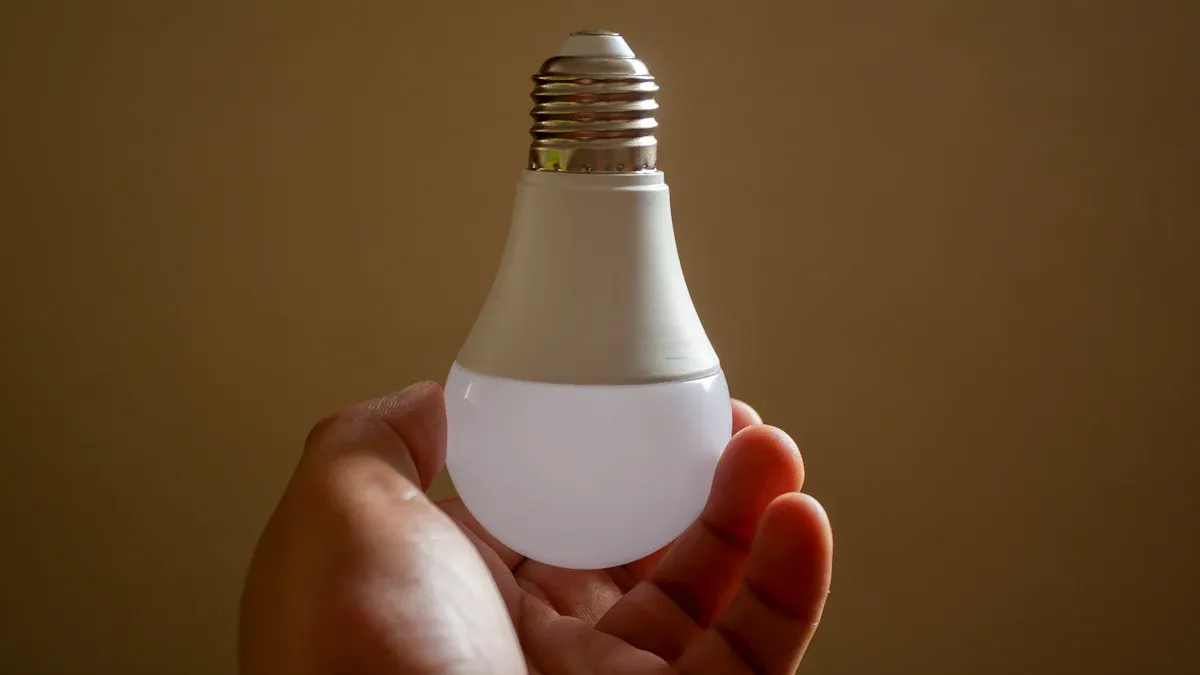
You might stand in your Home, holding an old bulb, and wonder how bright a new Led Light will be. LED Watt Conversion helps you match the brightness while saving money. Today, more homes choose LED bulbs for indoor lighting.
In 2020, 47% of U.S. households reported using LEDs for most or all lighting.
Only 4% did so in 2015.
Switching to LED lighting can save up to 90% on lighting costs. LEDs also cut energy use and maintenance. About Us and Product guides often highlight these benefits.
Key Takeaways
LED Watt Conversion helps you pick the right bulb. It makes sure you keep the same brightness and save energy.
Always look at lumens, not wattage, when picking bulbs. Lumens show how bright a bulb is. Wattage tells you how much energy it uses.
If you switch to LED bulbs, you can save up to 90% on lighting costs. This will lower your monthly energy bills a lot.
LED bulbs last much longer than old bulbs. You will not need to replace them as often. This means less waste for the environment.
Use conversion charts to find the right LED for your old bulbs. This helps you get the brightness and color you want.
LED Watt Conversion Basics
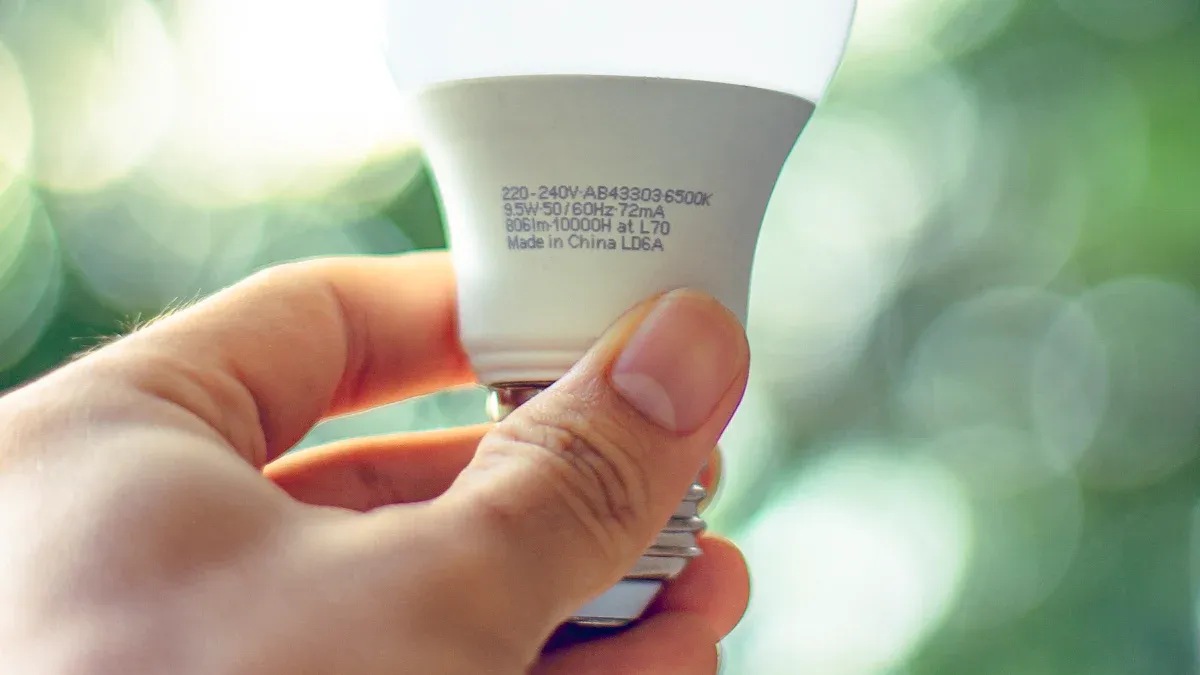
Why Conversion Matters
When you switch from traditional bulbs to LEDs, you want to keep your rooms bright and comfortable. LED Watt Conversion helps you choose the right bulb for your needs. You might notice that LED bulbs use much less energy than incandescent bulbs. This does not mean they are dimmer. LEDs produce more light with less power.
Manufacturers use lumens to measure brightness. In the past, people used wattage to guess how bright a bulb would be. This method does not work well with LEDs. LEDs can produce 70-100 lumens per watt. Incandescent bulbs need much more power to reach the same brightness. You can see the difference in the table below:
Lumens | Incandescent bulb | LED bulb |
|---|---|---|
75-110 | 9 watts | 1 watt |
730-800 | 60 watts | 7-9 watts |
1380-1600 | 100 watts | 12-14 watts |
2000-2500 | 150 watts | 18-23 watts |
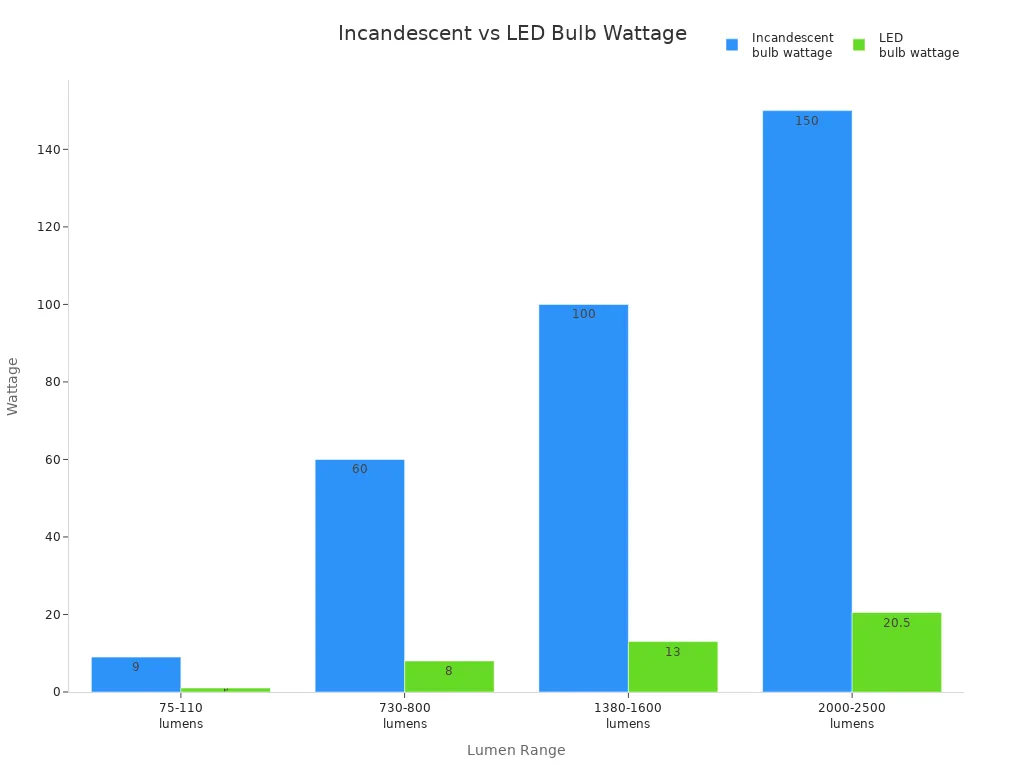
You save energy and money when you use LED Watt Conversion to pick your bulbs. For example, a 60-watt incandescent bulb can be replaced by a 7-9 watt LED bulb. You get the same brightness but use much less electricity.
Common Myths
Some people think that wattage shows how bright a bulb is. This is not true. Wattage only tells you how much energy the bulb uses. Brightness comes from lumens. You should look for lumens when you buy new bulbs.
You might hear that all LED bulbs are the same. This is not correct. The quality of the bulb affects how well it works. Some LEDs last longer and shine brighter than others. Color temperature also matters. Bulbs with a higher Kelvin rating look cooler and whiter. Bulbs with a lower Kelvin rating look warmer and more yellow. These factors change how you see the light in your room.
Tip: Always check the lumens and color temperature on the package before you buy an LED bulb. This helps you match the light to your space.
Manufacturers use LED Watt Conversion to help you find the right bulb. They focus on lumens, not wattage. LEDs give you more light for less energy. The efficiency ratio is about 7:1. This means a 10-watt LED can replace a 70-watt incandescent bulb.
You also save money every month. The table below shows how much you can save:
Brightness (Lumens) | Incandescent cost/month | LED cost/month | Savings/month with LED |
|---|---|---|---|
400-500 | $1.54 | $0.25 | $1.29 |
650-850 | $2.30 | $0.33 | $1.97 |
1000-1400 | $2.88 | $0.49 | $2.39 |
1450-1700+ | $3.84 | $0.66 | $3.18 |
2700+ | $5.76 | $1.03 | $4.73 |
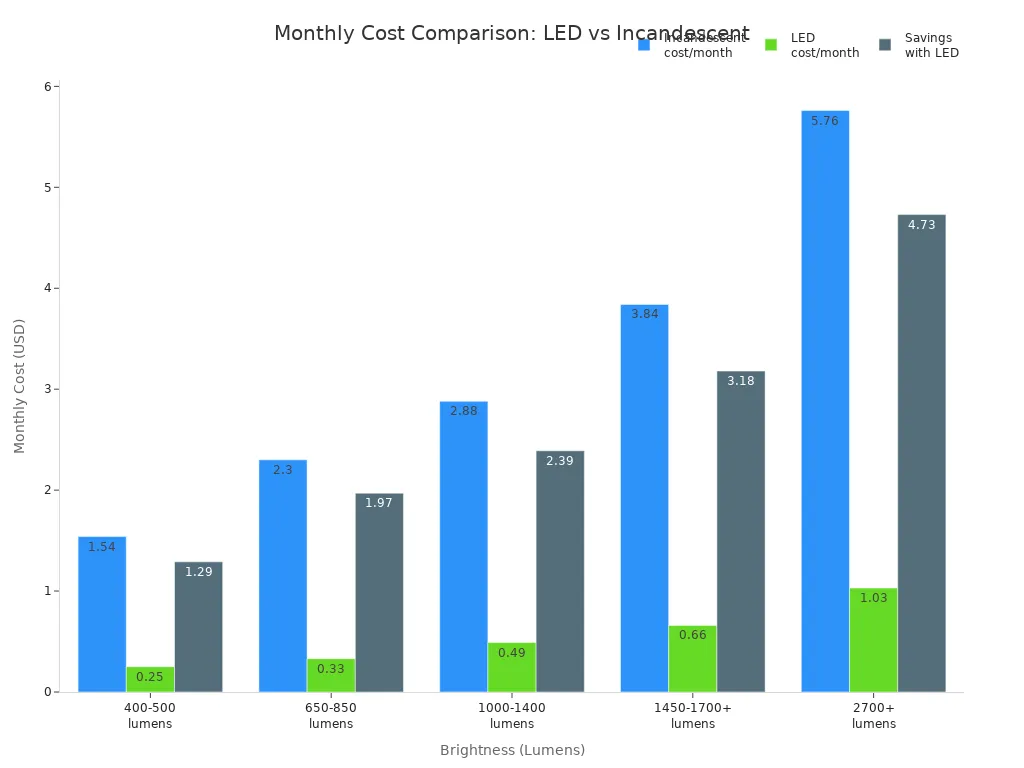
When you use LED Watt Conversion, you make smart choices. You get the right brightness, save energy, and spend less money. You also help the environment by using less electricity.
Lumens vs. Watts
What Are Lumens?
You may see the word "lumens" on every light bulb package today. Lumens measure the total amount of visible light a bulb gives off. This unit helps you compare brightness across different types of bulbs. A lumen shows how much light you get from a source, not how much energy it uses. For example, a 100-watt incandescent bulb produces about 1600 lumens. If you want a bright room, you need a bulb with a higher lumen count.
Lumens provide a clear way to choose the right bulb for your space. The higher the lumens, the brighter the light. This measurement is important for tasks that need strong lighting, like reading or cooking. You can use lumens to match the brightness you want, no matter which technology you choose.
Note: Lumens focus on the light output, while watts only show energy use. Always check lumens first when you shop for bulbs.
Lumens for LED Selection
When you pick an LED bulb, look for the lumens listed on the package. This number tells you how bright the bulb will be. You can use LED Watt Conversion to help match the brightness of your old bulbs. Most packages also show the equivalent wattage for incandescent bulbs, making it easier to choose.
Here is a simple table to help you compare:
LED Lumens | Incandescent Watts |
|---|---|
1600 | 100 |
1125 | 75 |
900 | 60 |
600 | 40 |
375 | 25 |
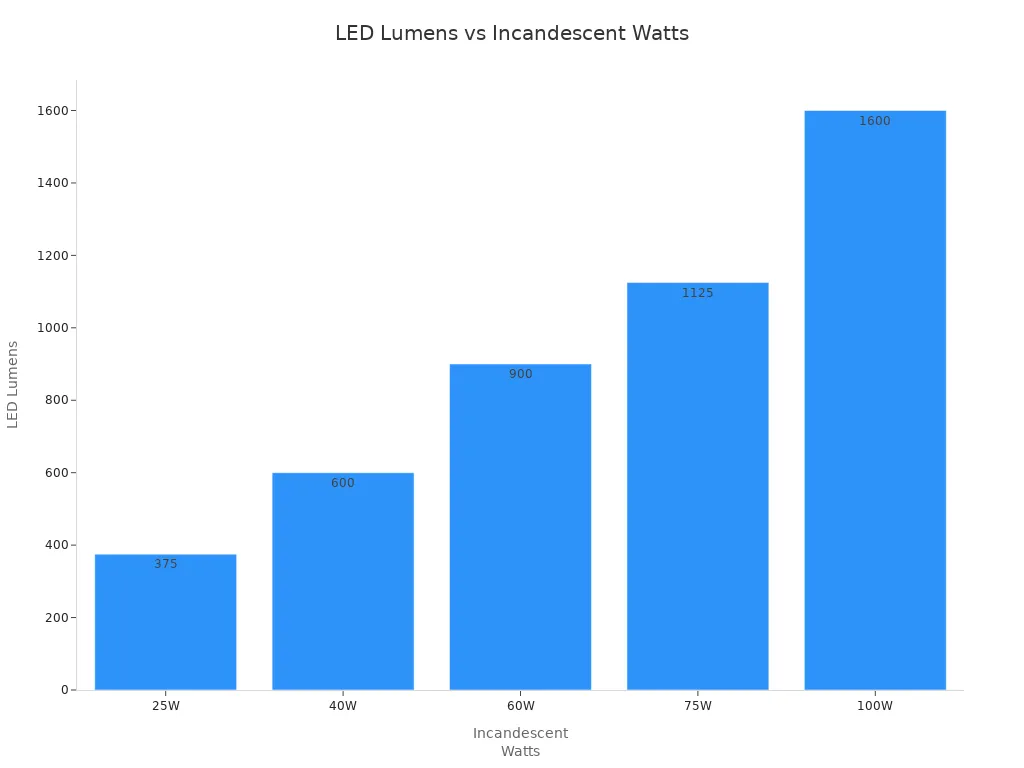
You should also think about the room and its purpose. Lower lumens with warmer color temperatures create a cozy feeling, perfect for bedrooms or living rooms. Higher lumens work best in kitchens or offices, where you need more light for tasks. Adjustable LEDs and dimmers let you change the brightness to fit your needs.
Here is a guide for common spaces:
Lighting Type | Lumen Range |
|---|---|
Functional lighting | 806 - 1520 lumens |
General lighting | 400 - 470 lumens |
Mood lighting | 220 - 360 lumens |
Choosing the right lumens helps you create the best atmosphere in your home. You get the brightness you want and save energy at the same time.
LED Equivalents Guide
Conversion Chart
You want to replace your old bulbs with LEDs. You need to know which LED bulb matches your old incandescent or CFL bulb. Follow these steps to find the right LED equivalent:
Check the wattage of your old bulb.
Look at the base or packaging for the watt number.Find the lumen output.
Incandescent bulbs use more watts for the same brightness. LEDs use fewer watts but give the same or more lumens.Use a conversion chart.
Match your old bulb’s wattage to the LED wattage and lumens.Consider color temperature and bulb shape.
Warm light (2700K) feels cozy. Daylight (5000K) looks bright and white. Bulb shape affects how light spreads in your room.Check the base type.
Make sure the LED bulb fits your socket (E26, E27, E14, etc.).
Tip: Always read the package for lumens and color temperature. This helps you get the right light for your space.
Here is a simple conversion chart for common bulbs:
Product Type | LED Wattage (W) | Lumen Output (lm) | Luminous Efficacy (lm/W) | Base | Incandescent Wattage (W) |
|---|---|---|---|---|---|
LED bulb | 3 | 300 | 100 | E14 | 25 |
LED bulb | 5 | 470 | 94 | E27 | 40 |
LED bulb | 7 | 630 | 90 | E27 | 50 |
LED bulb | 8 | 800 | 100 | E40 | 60 |
LED bulb | 14 | 1500 | 100 | E40 | 100 |
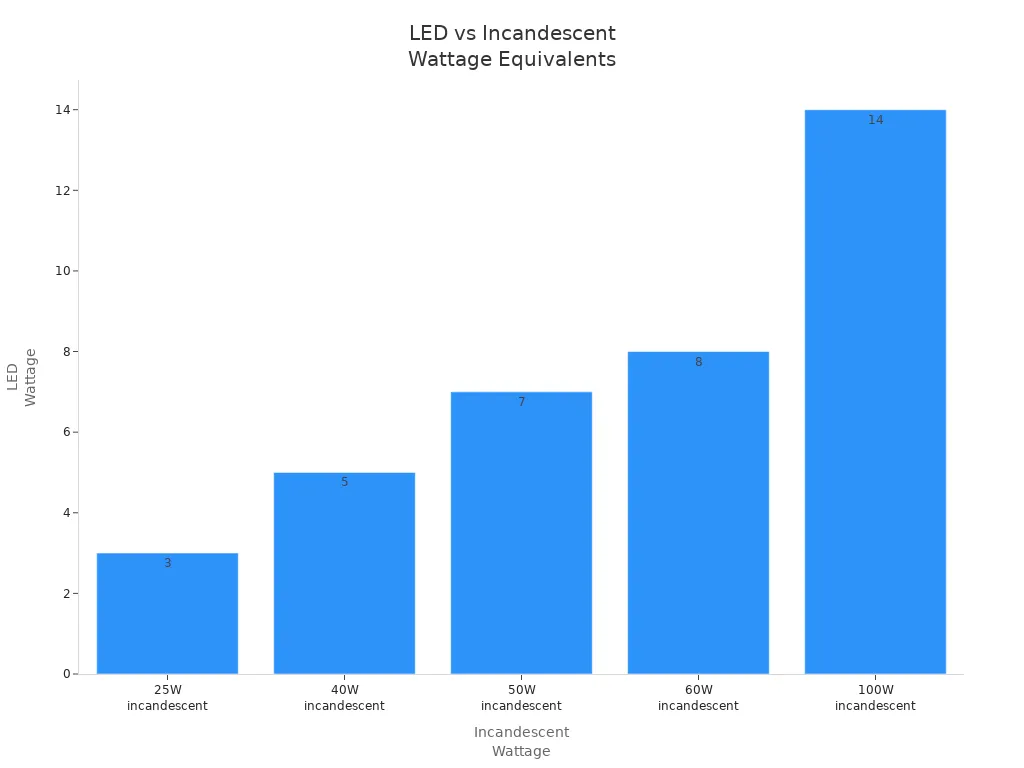
You see that LEDs use much less power for the same brightness. For example, an 8-watt LED bulb gives you 800 lumens, which matches a 60-watt incandescent bulb.
LED Watt Conversion helps you save energy and money. You also get bulbs that last longer and need less maintenance.
Example: 60W Incandescent
Let’s look at a common bulb: the 60-watt incandescent. You want to replace it with an LED bulb. Here’s how you do it:
Find the brightness you need.
A 60W incandescent bulb gives about 800 lumens.Choose an LED bulb with similar lumens.
LED bulbs with 8 to 12 watts give you 800 to 1600 lumens.
Bulb Type | Wattage (W) | Lumen Output (lm) |
|---|---|---|
Incandescent 60W | 60 | 800 |
LED Equivalent | 8 - 12 | 800 - 1600 |
Pick the color temperature.
Warm white (2700K) feels soft and cozy. Daylight (5000K) looks bright and clear.
Feature | Details |
|---|---|
Color Temperature | 2700K (warm) |
Brightness | 800 lumens |
Lifespan | 15,000 hours |
Feature | Details |
|---|---|
Color Temperature | 5000K (daylight) |
Brightness | 800 lumens |
Energy Consumption | 9.5W |
Check if the bulb is dimmable.
Many LED bulbs let you adjust the brightness.
Feature | Details |
|---|---|
Dimmable | Yes |
Base Type | E26 |
Look at the bulb design.
The shape and size affect how light spreads. Pick a bulb that fits your lamp or fixture.
Note: LED wattage may change based on the brand, bulb quality, and color temperature. Some manufacturers use different methods to measure power and brightness. The shape and size of the bulb also change how bright it looks in your room.
Light Source Efficiency: Some brands make LEDs that shine brighter at the same wattage.
Power Efficiency: The driver inside the bulb affects how much light you get.
Power Labeling: Brands may label wattage in different ways.
Light-Emitting Area: Bulb shape changes how light spreads.
Color Temperature: Warm bulbs look softer. Cool bulbs look brighter.
LED bulbs keep their brightness longer than old bulbs. Incandescent bulbs lose brightness over time. LEDs keep 70% of their light for over 100,000 hours. You get more usable light and save on replacements.
Metric | Metal Halide | LED |
|---|---|---|
Initial Lumen Output | 30,000 | Higher than 30,000 |
Lumen Depreciation | 20% loss in 6 months | Minimal loss over 100,000+ hours |
Usable Lumen Output at Mid-life | 15,000-18,000 | Maintains 70% output longer |
Energy Conversion Efficiency | 10-15% to light | 85-90% to light |
L70 Rating | ~5,000 hours | 100,000+ hours |
When you use these steps and charts, you pick the right LED bulb every time. You get the brightness you want, save energy, and enjoy longer-lasting light.
LED vs. Incandescent & CFL
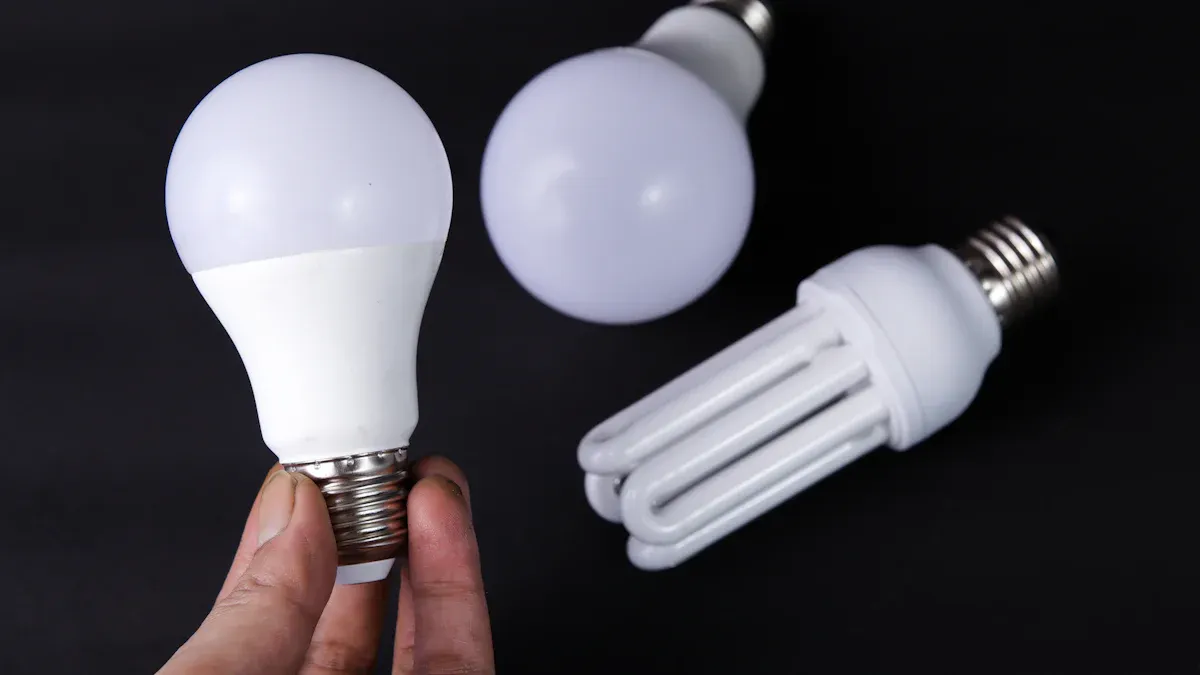
Efficiency
You can see a big difference in energy efficiency when you compare LED, incandescent, and CFL bulbs. LED bulbs use the least energy. CFL bulbs also save energy, but not as much as LEDs. Incandescent bulbs use the most energy and set the baseline for comparison. The table below shows how much energy each type saves:
Bulb Type | Energy Efficiency Compared to Incandescent | Energy Usage Reduction |
|---|---|---|
LED | Most efficient | 75% less |
CFL | Less efficient than LED | 75% less |
Incandescent | Baseline | N/A |
LED Watt Conversion helps you choose bulbs that use less electricity. When you switch to LEDs, you lower your energy bills and reduce your carbon footprint. LED bulbs use up to 80% less energy than traditional bulbs. This means less fossil fuel is burned and fewer greenhouse gases enter the atmosphere.
Tip: If every home in the U.S. replaced one bulb with an LED, greenhouse gas emissions would drop by 9 million pounds each year.
Lifespan
LED bulbs last much longer than incandescent and CFL bulbs. You spend less time and money replacing bulbs. The chart below shows how long each type lasts:
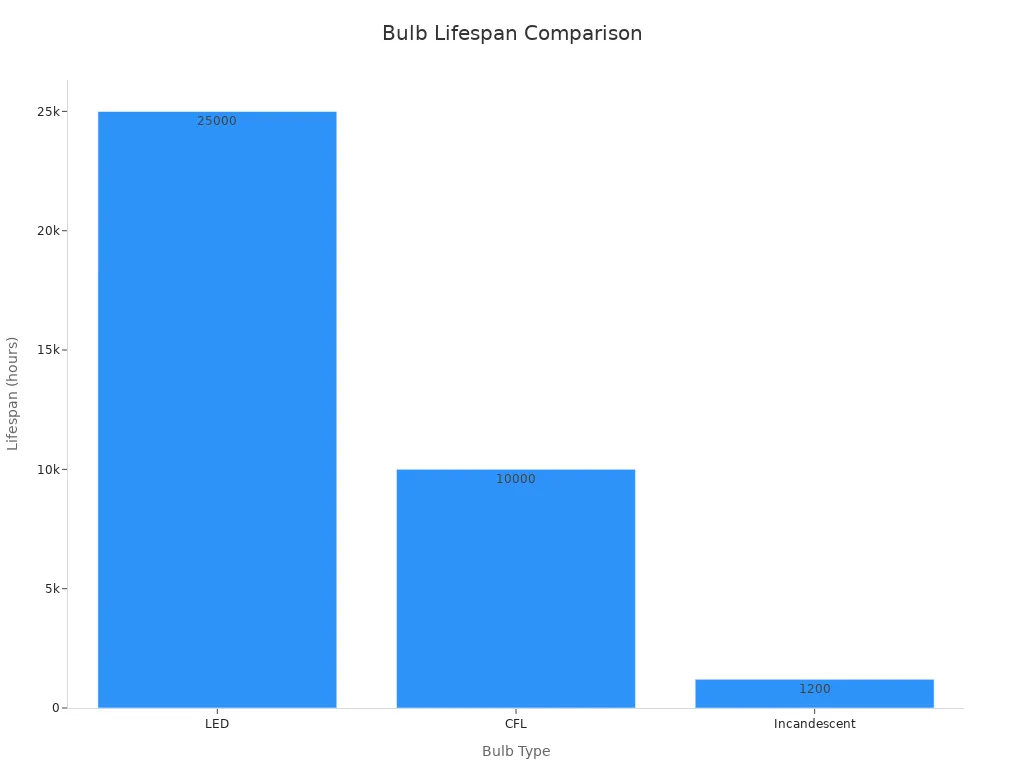
Bulb Type | Typical Lifespan (hours) |
|---|---|
LED | 25,000 - 200,000 |
CFL | 10,000 - 24,000 |
Incandescent | ~1,200 |
LED bulbs can last up to 200,000 hours. CFL bulbs reach up to 24,000 hours. Incandescent bulbs only last about 1,200 hours. You replace LED bulbs less often, which means less waste and fewer trips to the store. Environmental factors like heat, moisture, and dust can affect how long LEDs last. Good heat management helps LEDs reach their full lifespan.
Note: LEDs do not contain mercury or other harmful chemicals, making them safer for your home and the environment.
Cost Savings
Switching to LED bulbs saves you money over time. You pay less for energy and replacements. The table below shows the costs for each bulb type over its lifetime:
Bulb Type | Lifetime Energy Costs | Lifetime Replacement Costs | Initial Cost | Total Lifetime Savings |
|---|---|---|---|---|
Halogen | $68.02 | $10.22 | $2.12 | $76.12 |
Incandescent | $102.07 | $8.89 | $2.12 | $108.84 |
CFL | $8.01 | $1.74 | $2.12 | $7.63 |
LED bulbs cut your electricity use and replacement costs. For a home with 45 bulbs, you could save up to $4,898 by switching from incandescent to LED bulbs. Businesses save thousands of dollars each year. Fewer replacements mean less waste and lower maintenance costs.
LED bulbs last longer, so you buy fewer bulbs.
You spend less time changing bulbs.
Less waste goes to landfills.
LED parts can be recycled or upcycled.
LED Watt Conversion makes it easy to choose bulbs that save energy and money. You help the planet by using less energy and creating less waste.
You get lots of benefits when you use LED Watt Conversion. LED bulbs need much less energy than old lights. They last a long time. You spend less money on power and buying new bulbs. LEDs are good for the planet because they lower pollution and make less trash.
Look at lumens and charts to find the right bulb. You can use online tools or ask experts to help you choose the best bulb for your room.
FAQ
How do you know which LED bulb replaces your old incandescent bulb?
You can check the lumens on the package. Match the lumens of your old bulb to the LED bulb. Use conversion charts for quick reference.
Do LED bulbs work in any light fixture?
Most LED bulbs fit standard sockets. You should check the base type and size before buying. Some fixtures need special bulbs.
Why do LED bulbs cost more at first?
LED bulbs use advanced technology. You pay more at first, but you save money over time. LEDs last longer and use less energy.
Can you use dimmers with LED bulbs?
Many LED bulbs work with dimmers. Look for "dimmable" on the package. Non-dimmable LEDs may flicker or not work with dimmer switches.
See Also
Comparing LED Lamps With Conventional Lighting Solutions
Evaluating LED Streetlights Against Conventional Lighting Choices
Understanding Industrial LED Bulbs: Uses, Efficiency, and Choices

